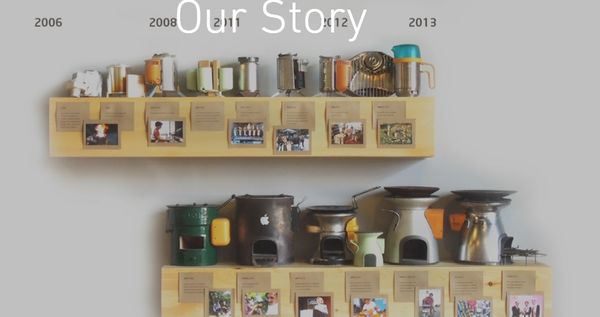Click here to register!
Difference between revisions of "Product Design and Purchasing Decision"
***** (***** | *****) |
***** (***** | *****) m |
||
| (21 intermediate revisions by 3 users not shown) | |||
| Line 1: | Line 1: | ||
= Overview<br/> = | = Overview<br/> = | ||
| + | |||
| + | Users dominate the market which is enough reason to design products understanding their needs and preferences. An alternative to do so is to come up with a product applying the aspects of democratic design. Today’s different financial approaches have empowerd low-income households to not only base their purchasing decisions on their affordability but on form, functionality and quality of products, among other aspects. For example, when purchasing a product people place a high value to colour. However, in different markets the same colour might have various interpretations and/or associations, in consequence these need to be considered, particularly at the time of entering a new market and/or introducing a new product. | ||
| + | |||
| + | User’s feedback is a powerful alternative to determine if a product has a user-centred design or not. As a result, systematic data collection can provide valuable information to help (re-)direct a product design to the current and/or local conditions. | ||
| + | |||
| + | This article explains the concepts of democratic and user-centred design, lists feedback from users on design aspects of Pico PV and cookstoves, and points out a series of questions that have not been addressed yet. | ||
= Democratic Design = | = Democratic Design = | ||
| − | Designing a product is a process of solving problems creatively. Usually it considers not only the aesthetics and technological constrains, but also the user’s needs. A famous Swedish furniture and home accessories retailer (applying continuous product development) has identified five crucial factors for a democratic design, | + | Designing a product is a process of solving problems creatively. Usually it considers not only the aesthetics and technological constrains, but also the user’s needs. A famous Swedish furniture and home accessories retailer (applying continuous product development) has identified five crucial factors for a democratic design. Hence, products have to be: |
#Functional<br/> | #Functional<br/> | ||
| Line 17: | Line 23: | ||
Over the decades, continue development in design of improved stoves was possible as a result of caring not only about the shape, but doing things better according to people’s needs and wishes. This have been possible thanks to the feedback provided by the final users and taking a democratic design approach influencing from the conception to the final product. | Over the decades, continue development in design of improved stoves was possible as a result of caring not only about the shape, but doing things better according to people’s needs and wishes. This have been possible thanks to the feedback provided by the final users and taking a democratic design approach influencing from the conception to the final product. | ||
| − | <p style="text-align: center">Photo 1: Example of product design development over time</p><p style="text-align: center"> | + | <p style="text-align: center">Photo 1: Example of product design development over time</p><p style="text-align: center">[[File:Improved stoves development story-Bioliteenergy.jpg|center|600px|alt=Improved stoves development story-Bioliteenergy.jpg]]</p><p style="text-align: center">Source: BioLite Inc. 2017<ref name="BioLite">BioLite Inc. (2017). Our Story. Retrieved from BioLite: http://www.bioliteenergy.com/pages/our-story</ref></p> |
<br/> | <br/> | ||
= User-Centred Design<br/> = | = User-Centred Design<br/> = | ||
| − | Users dominate the market and therefore have the capability to determine the success of failure of a product. Consequently, it is uttermost to pay attention to the users’ needs and their cultural context to combine with technical factors when designing/ improving a product. In 2012, the Stockholm Environment Institute (SEI) carried out [https://www.sei-international.org/mediamanager/documents/Publications/Atmospheric/sei-wp-2012-03-cookstoves.pdf a study applying a qualitative ‘generative’ research methodology]to understand the needs and desires of people regarding an improved stove.<br/> | + | Users dominate the market and therefore have the capability to determine the success of failure of a product. Consequently, it is uttermost to pay attention to the users’ needs and their cultural context to combine with technical factors when designing/ improving a product. In 2012, the Stockholm Environment Institute (SEI) carried out [https://www.sei-international.org/mediamanager/documents/Publications/Atmospheric/sei-wp-2012-03-cookstoves.pdf a study applying a qualitative ‘generative’ research methodology] to understand the needs and desires of people regarding an improved stove.<br/> |
{| style="width:100%" cellspacing="1" cellpadding="1" border="1" | {| style="width:100%" cellspacing="1" cellpadding="1" border="1" | ||
| Line 52: | Line 58: | ||
|} | |} | ||
<p style="text-align: center">Source: SEI, 2012<ref name="SEI">SEI. (2012). Putting the Cook Before the Stove: a User-Centred Approach to Understanding Household Energy Decision-Making. Working Paper. Stockholm: Stockholm Environment Institute.https://www.sei-international.org/mediamanager/documents/Publications/Atmospheric/sei-wp-2012-03-cookstoves.pdf</ref></p> | <p style="text-align: center">Source: SEI, 2012<ref name="SEI">SEI. (2012). Putting the Cook Before the Stove: a User-Centred Approach to Understanding Household Energy Decision-Making. Working Paper. Stockholm: Stockholm Environment Institute.https://www.sei-international.org/mediamanager/documents/Publications/Atmospheric/sei-wp-2012-03-cookstoves.pdf</ref></p> | ||
| − | These features can serve as a guidance for other technologies, though it is important to contextualize according to the prevailing geographical and socio-economic characteristics and particularities. Taking into account the | + | These features can serve as a guidance for other technologies, though it is important to contextualize according to the prevailing geographical and socio-economic characteristics and particularities. Taking into account the [[Product Design and Purchasing Decision#Democratic Design|five crucial factors of democratic design]], long lasting <span style="font-size: 10pt; line-height: 107%; font-family: Arial, sans-serif; background: white">and sustainable technology are not considered among the features identified by SEI, as it was not was part of their scope. F<span style="font-size: 13.6px; background-color: rgb(255, 255, 255)">urther studies, h</span>owever, <span style="font-size: 13.6px; background-color: rgb(255, 255, 255)">could consider to analyse </span>granted warranties and good performance in tests </span>([[Portal:Solar|Pico PV]] and [[Quality Assurance of Improved Cookstoves (ICS)|Stoves]]) to <span style="font-family: Arial, sans-serif; font-size: 13.6px; background-color: rgb(255, 255, 255)">supplement these aspects</span>. |
| − | |||
| − | < | ||
== Importance of Colour == | == Importance of Colour == | ||
| − | + | When a design responds to what users want, it is just a matter of ensuring product information for <span style="font-size: 13.6px; background-color: rgb(255, 255, 255)">potential customers and expect them </span>to try (purchase) the product<ref>Rogers, E. M. (1995). Diffusion of innovations. Fourth edition. New York: The Free Press. Retrieved from https://books.google.de/books?hl=en&lr=&id=v1ii4QsB7jIC&oi=fnd&pg=PR15&dq=rogers+five+stages+of+adoption&ots=DK-osRTo8Q&sig=vJs6qGfhdKMg9YZ03_u55ombdng#v=onepage&q=stages%20adoption&f=false</ref> ([[Drivers of Adoption: Innovation and Behavioural Theory|stages of the adoption process of ideas and technology]]). Furthermore, [[Commercialisation of Cookstoves|commercializing]] a product involves a set of activities to persuade customers. According to marketing theory, 85% of customers place <u>colour </u>as a primary reason why they buy a product, and <u>visual appearance</u> is a factor that 93% consumers consider overall .<ref>Kissmetrics. (2017). How do colors affect purchases? Retrieved from Kissmetrics Blog. A blog about analytics, marketing and testing: https://blog.kissmetrics.com/color-psychology/?wide=1</ref><br/> | |
| − | Multicultural research approaches stress the importance of understanding the cultural interpretations and/ or associations of colour in product design, as these may result of century-old traditions, religious beliefs, contemporary influences, political an historical developments and form the cultural foundation of a country or people<ref name="TNS">TNS Multicultural Research Services. (2010). Multicultural Researach. A selection of expertise from TNS colleagues around the world. New York: TNS Multicultural Research Services. Retrieved from https://www.tns-infratest.com/presse/pdf/autorenbeitraege/10_41_ab_tns_mc_book_03-03-2010.pdf</ref>. Therefore the potential of knowing these particular interpretations should not be underestimated. Used in the right way could mean understanding the mind-set of customers not only in terms of what they want but also on terms of aesthetics. ‘The wrong choice of a products’ colour can result in a slow seller […] among the Massai (ethnic group from south of Kenya and northern Tanzania), there is a high probability that a product will sell if it has some red colour on it. Why? Because red is sacred, the colour of blood from their cattle, which they cherish so much’<ref name="TNS">_</ref>.<br/> | + | Multicultural research approaches stress the importance of understanding the cultural interpretations and/ or associations of colour in product design, as these may result of century-old traditions, religious beliefs, contemporary influences, political an historical developments and form the cultural foundation of a country or people<ref name="TNS">TNS Multicultural Research Services. (2010). Multicultural Researach. A selection of expertise from TNS colleagues around the world. New York: TNS Multicultural Research Services. Retrieved from https://www.tns-infratest.com/presse/pdf/autorenbeitraege/10_41_ab_tns_mc_book_03-03-2010.pdf</ref>. Therefore, the potential of knowing these particular interpretations should not be underestimated. Used in the right way could mean understanding the mind-set of customers not only in terms of what they want but also on terms of aesthetics. ‘The wrong choice of a products’ colour can result in a slow seller […] among the Massai (ethnic group from south of Kenya and northern Tanzania), there is a high probability that a product will sell if it has some red colour on it. Why? Because red is sacred, the colour of blood from their cattle, which they cherish so much’<ref name="TNS">_</ref>.<br/> |
= User’s Feedback for Design: Lighting & Cooking Technologies = | = User’s Feedback for Design: Lighting & Cooking Technologies = | ||
| Line 66: | Line 70: | ||
Before a product is launched into the market (pilot) or when it is already in the market, it is crucial to gather reliable systematic data that allows to obtain the experience of users with using the product, to hear them express their views that later can unleash changes in approaches and even design. Different discoveries in the field can provide relevant information to adapt the design to current needs and wishes, needless to say that <u>feedback </u>has an enormous potential. | Before a product is launched into the market (pilot) or when it is already in the market, it is crucial to gather reliable systematic data that allows to obtain the experience of users with using the product, to hear them express their views that later can unleash changes in approaches and even design. Different discoveries in the field can provide relevant information to adapt the design to current needs and wishes, needless to say that <u>feedback </u>has an enormous potential. | ||
| − | The following Pico PV and improved cookstoves user’s claims were collected from different studies performed by various entities in different countries:<br/> | + | The following Pico PV and improved cookstoves user’s claims were collected from different studies performed by various entities in different countries between the years (2011-2016):<br/> |
== Pico PV == | == Pico PV == | ||
| Line 87: | Line 91: | ||
*‘To increase the '''height of the stove'''’<ref name="Cleanstar">_</ref>.<br/> | *‘To increase the '''height of the stove'''’<ref name="Cleanstar">_</ref>.<br/> | ||
| − | = Design Evolution<br/> = | + | == Design Evolution<br/> == |
| − | *See marketing/comercialisation: [[Commercialisation of Cookstoves#The 4 Ps: Product|ICS - Product]] | + | *See marketing/comercialisation: [[Commercialisation of Cookstoves#The 4 Ps: Product|ICS - Product]] |
| − | = | + | = How a User Centred and Democratic Design Responds to Purchase Behaviours?<br/> = |
| − | + | Worldwide there is plentiful experience with ICS, as well as a very dynamic development of Pico PV technologies in the past years, that is exactly why the following open questions motivate further understanding the influence of democratic and user-centred design. Perhaps some of these questions have been described in studies that were not considered in this article, or exist in frameworks, methodologies and tools or rather still demand an answer by starting the discussion here. | |
| − | = | + | *<span style="color:#0000CD">How balanced is the relation between engineering (i.e. to achieve efficiency with chimney, temperature control, automated ash collection, electricity needs and other extras) and social science (i.e. focused on the person(s) doing the cooking and his/her context)?</span> |
| + | *<span style="color:#0000CD">In the practice, which colours & symbols are associated to: trust, luxury, reliability, good, status, prestige, happiness, accomplishment, clean, wealth, trustworthy, sophistication, etc.?</span> | ||
| + | *<span style="color:#0000CD">Based on the five criteria of democratic design (functional, beautiful, long lasting, sustainable, affordable), which are the reasons for purchasing an improved energy technology?</span> | ||
| + | *<span style="color:#0000CD">Which are the documented examples to contextualize technologies to social aspects such as culture, beliefs, practices, etc.?</span> | ||
| + | *<span style="color:#0000CD">Is there an experience monitoring sales behaviours before and after adjusting the design to a user-centred approach based on the context/ current conditions?</span> | ||
| − | + | <br/> | |
= Further Reading = | = Further Reading = | ||
| − | *[[Adapted Product and Service Design – How to Work Together for a Sustainable Future?|Adapted Product and Service Design- How to Work Together for a Sustainable Future?]] Summary and presentations of Prof. Kalevi Ekman from Finland founder of the Aalto University Design Factory and Noara Kebir is the Managing Director and co-founder of MicroEnergy International. | + | *[[Adapted Product and Service Design – How to Work Together for a Sustainable Future?|Adapted Product and Service Design- How to Work Together for a Sustainable Future?]] Summary and presentations of Prof. Kalevi Ekman from Finland founder of the Aalto University Design Factory and Noara Kebir is the Managing Director and co-founder of MicroEnergy International.<br/> |
*More about [https://www.sei-international.org/mediamanager/documents/Publications/Atmospheric/sei-wp-2012-03-cookstoves.pdf putting people at the centre of the design process] in a study carried out in India to identify influences over household energy choices. The study applied a qualitative ‘generative’ research methodology to research on energy use and dynamics. [https://www.sei-international.org/mediamanager/documents/Publications/Atmospheric/sei-wp-2012-03-cookstoves.pdf Energy use and dynamics in villages in India] (stoves). | *More about [https://www.sei-international.org/mediamanager/documents/Publications/Atmospheric/sei-wp-2012-03-cookstoves.pdf putting people at the centre of the design process] in a study carried out in India to identify influences over household energy choices. The study applied a qualitative ‘generative’ research methodology to research on energy use and dynamics. [https://www.sei-international.org/mediamanager/documents/Publications/Atmospheric/sei-wp-2012-03-cookstoves.pdf Energy use and dynamics in villages in India] (stoves). | ||
*[https://docs.google.com/file/d/0B6m2VtucIAiqLUM2VE4xcFhIa00/edit Institutional use of ethanol cookstoves in Maputo, pilot study].<br/> | *[https://docs.google.com/file/d/0B6m2VtucIAiqLUM2VE4xcFhIa00/edit Institutional use of ethanol cookstoves in Maputo, pilot study].<br/> | ||
| Line 113: | Line 121: | ||
<br/> | <br/> | ||
| + | |||
| + | [[Category:Sustainability]] | ||
| + | [[Category:Research]] | ||
| + | [[Category:Project_Experiences]] | ||
| + | [[Category:Monitoring]] | ||
| + | [[Category:PicoPV]] | ||
| + | [[Category:Cookstoves]] | ||
Latest revision as of 09:24, 4 July 2017
Overview
Users dominate the market which is enough reason to design products understanding their needs and preferences. An alternative to do so is to come up with a product applying the aspects of democratic design. Today’s different financial approaches have empowerd low-income households to not only base their purchasing decisions on their affordability but on form, functionality and quality of products, among other aspects. For example, when purchasing a product people place a high value to colour. However, in different markets the same colour might have various interpretations and/or associations, in consequence these need to be considered, particularly at the time of entering a new market and/or introducing a new product.
User’s feedback is a powerful alternative to determine if a product has a user-centred design or not. As a result, systematic data collection can provide valuable information to help (re-)direct a product design to the current and/or local conditions.
This article explains the concepts of democratic and user-centred design, lists feedback from users on design aspects of Pico PV and cookstoves, and points out a series of questions that have not been addressed yet.
Democratic Design
Designing a product is a process of solving problems creatively. Usually it considers not only the aesthetics and technological constrains, but also the user’s needs. A famous Swedish furniture and home accessories retailer (applying continuous product development) has identified five crucial factors for a democratic design. Hence, products have to be:
- Functional
- Beautiful
- Long lasting
- Sustainable
- Affordable
These factors can also be considered in modern energy technologies design (i.e. efficient stoves and Pico PV lamps): ‘Products should be designed understanding that people want them to work, and to make life easier (function), that are beautiful (form), demand value for money (quality), care about the environment (sustainability) and are affordable (low price)’. [1]
Perhaps it is important not to think about low prices as the absolute key factor to ensure low-income households to purchase a certain technology. Nowadays, different financial schemes have been deployed in order to facilitate energy access (Financing Mechanisms for Cookstove Dissemination, Financing Models for Solar Home Systems, Use of Microfinance Institutions for Renewable Energy Technologies). Therefore, affordability should not be the primary aspect of a purchasing decision by a household or at least not the only one.
Over the decades, continue development in design of improved stoves was possible as a result of caring not only about the shape, but doing things better according to people’s needs and wishes. This have been possible thanks to the feedback provided by the final users and taking a democratic design approach influencing from the conception to the final product.
Photo 1: Example of product design development over time
Source: BioLite Inc. 2017[2]
User-Centred Design
Users dominate the market and therefore have the capability to determine the success of failure of a product. Consequently, it is uttermost to pay attention to the users’ needs and their cultural context to combine with technical factors when designing/ improving a product. In 2012, the Stockholm Environment Institute (SEI) carried out a study applying a qualitative ‘generative’ research methodology to understand the needs and desires of people regarding an improved stove.
|
|
|
|
|
|
Source: SEI, 2012[3]
These features can serve as a guidance for other technologies, though it is important to contextualize according to the prevailing geographical and socio-economic characteristics and particularities. Taking into account the five crucial factors of democratic design, long lasting and sustainable technology are not considered among the features identified by SEI, as it was not was part of their scope. Further studies, however, could consider to analyse granted warranties and good performance in tests (Pico PV and Stoves) to supplement these aspects.
Importance of Colour
When a design responds to what users want, it is just a matter of ensuring product information for potential customers and expect them to try (purchase) the product[4] (stages of the adoption process of ideas and technology). Furthermore, commercializing a product involves a set of activities to persuade customers. According to marketing theory, 85% of customers place colour as a primary reason why they buy a product, and visual appearance is a factor that 93% consumers consider overall .[5]
Multicultural research approaches stress the importance of understanding the cultural interpretations and/ or associations of colour in product design, as these may result of century-old traditions, religious beliefs, contemporary influences, political an historical developments and form the cultural foundation of a country or people[6]. Therefore, the potential of knowing these particular interpretations should not be underestimated. Used in the right way could mean understanding the mind-set of customers not only in terms of what they want but also on terms of aesthetics. ‘The wrong choice of a products’ colour can result in a slow seller […] among the Massai (ethnic group from south of Kenya and northern Tanzania), there is a high probability that a product will sell if it has some red colour on it. Why? Because red is sacred, the colour of blood from their cattle, which they cherish so much’[6].
User’s Feedback for Design: Lighting & Cooking Technologies
Before a product is launched into the market (pilot) or when it is already in the market, it is crucial to gather reliable systematic data that allows to obtain the experience of users with using the product, to hear them express their views that later can unleash changes in approaches and even design. Different discoveries in the field can provide relevant information to adapt the design to current needs and wishes, needless to say that feedback has an enormous potential.
The following Pico PV and improved cookstoves user’s claims were collected from different studies performed by various entities in different countries between the years (2011-2016):
Pico PV
- ‘Easy Handling is required because the lamps are used for multiple purposed both inside and outside the house. The lamp should therefore be easy to take outside, for example by a handle bar, and should also be easy to hang inside. 11% of respondents cited handiness as an important feature’ [7].
- ‘17% of respondents described the robustness of the solar lamp as another factor of quality and stated that a lamp‘s material should not break easily. Parents can then allow their children to use the lamp without fear of broken lamps’[7].
- Participants were also afraid that the pull-switch could break and 50% of respondents preferred a built-in-switch. With a built-in-switch users only have to press the button. This helps to gain more trust in the technique and the life-cycle of products’[7].
- ‘28% of households interviewed appreciated if the lamp had a regulator to change the intensity of illumination. As a consequence people can use the light at the level of brightness they need for their activity. It is therefore also possible to save energy’[7].
- ‘Apart from safety, ease of operation should not be set aside. 22% of households stated that the system should also be easy for children to use the system'[7].
- ‘In order to fulfill the various demands of the different family members inside and outside the house, 44% of interviewees expressed their wish for a portable system [...] Since it is portable to have it here and there, they can use it here and there in different areas. It is very simple, we can use it even in the kitchen or some other areas in the compound. The portability it has, makes us love it’[7].
- ‘Without being asked for it, 22% of respondents expressed their wish for other additional features, like a radio'[7].
- ‘The five most common purchase decision criteria, besides product cost, were brightness, warranty terms, robustness, ability to charge mobile phones, and run-time’[8].
Improved cookstoves
- ‘Women consider clay stoves aesthetic appealing, in some instances have painted or decorated their stoves. By contrast, those asked did not like the appearance of metal stoves they have seen’[3].
- ‘A segment of users believed that stoves with plastic components restrict them to be used in religious functions or cooking for religion purposes’[9].
- ‘It would be ideal to also be able to cook with the bigger pots'[10].
- ‘Perhaps for it to be larger to hold some of my big pots. The flame should spread more under the larger pots'[10].
- ‘To increase the height of the stove’[10].
Design Evolution
- See marketing/comercialisation: ICS - Product
How a User Centred and Democratic Design Responds to Purchase Behaviours?
Worldwide there is plentiful experience with ICS, as well as a very dynamic development of Pico PV technologies in the past years, that is exactly why the following open questions motivate further understanding the influence of democratic and user-centred design. Perhaps some of these questions have been described in studies that were not considered in this article, or exist in frameworks, methodologies and tools or rather still demand an answer by starting the discussion here.
- How balanced is the relation between engineering (i.e. to achieve efficiency with chimney, temperature control, automated ash collection, electricity needs and other extras) and social science (i.e. focused on the person(s) doing the cooking and his/her context)?
- In the practice, which colours & symbols are associated to: trust, luxury, reliability, good, status, prestige, happiness, accomplishment, clean, wealth, trustworthy, sophistication, etc.?
- Based on the five criteria of democratic design (functional, beautiful, long lasting, sustainable, affordable), which are the reasons for purchasing an improved energy technology?
- Which are the documented examples to contextualize technologies to social aspects such as culture, beliefs, practices, etc.?
- Is there an experience monitoring sales behaviours before and after adjusting the design to a user-centred approach based on the context/ current conditions?
Further Reading
- Adapted Product and Service Design- How to Work Together for a Sustainable Future? Summary and presentations of Prof. Kalevi Ekman from Finland founder of the Aalto University Design Factory and Noara Kebir is the Managing Director and co-founder of MicroEnergy International.
- More about putting people at the centre of the design process in a study carried out in India to identify influences over household energy choices. The study applied a qualitative ‘generative’ research methodology to research on energy use and dynamics. Energy use and dynamics in villages in India (stoves).
- Institutional use of ethanol cookstoves in Maputo, pilot study.
- User’s acceptance study conducted in three states of India (stoves).
- Study on consumer preferences (solar).
- Acceptance of Pico PV in Ethiopia.
References
- ↑ IKEA. (2017, January). Why good design is democratic. Ikea Catalog. Design for Everyone. Retrieved from http://www.ikea-canada.com/newcatalogue2016/ikea_catalogue_en.pdf
- ↑ BioLite Inc. (2017). Our Story. Retrieved from BioLite: http://www.bioliteenergy.com/pages/our-story
- ↑ 3.0 3.1 SEI. (2012). Putting the Cook Before the Stove: a User-Centred Approach to Understanding Household Energy Decision-Making. Working Paper. Stockholm: Stockholm Environment Institute.https://www.sei-international.org/mediamanager/documents/Publications/Atmospheric/sei-wp-2012-03-cookstoves.pdf Cite error: Invalid
<ref>tag; name "SEI" defined multiple times with different content - ↑ Rogers, E. M. (1995). Diffusion of innovations. Fourth edition. New York: The Free Press. Retrieved from https://books.google.de/books?hl=en&lr=&id=v1ii4QsB7jIC&oi=fnd&pg=PR15&dq=rogers+five+stages+of+adoption&ots=DK-osRTo8Q&sig=vJs6qGfhdKMg9YZ03_u55ombdng#v=onepage&q=stages%20adoption&f=false
- ↑ Kissmetrics. (2017). How do colors affect purchases? Retrieved from Kissmetrics Blog. A blog about analytics, marketing and testing: https://blog.kissmetrics.com/color-psychology/?wide=1
- ↑ 6.0 6.1 TNS Multicultural Research Services. (2010). Multicultural Researach. A selection of expertise from TNS colleagues around the world. New York: TNS Multicultural Research Services. Retrieved from https://www.tns-infratest.com/presse/pdf/autorenbeitraege/10_41_ab_tns_mc_book_03-03-2010.pdf Cite error: Invalid
<ref>tag; name "TNS" defined multiple times with different content - ↑ 7.0 7.1 7.2 7.3 7.4 7.5 7.6 Müggenburg, H. (2011). Rural Electrification: Acceptance of Pico Photovoltaic Systems in Ethiopia. Which conditions contribute to a sustainable integration of technical innovations into work and daily life in developing countries and implementation in the context of development. Darmstadt: Technische Universität Darmstatdt Institut für Psychologie. Retrieved from https://energypedia.info/images/9/94/Rural_Electrification%2C_Acceptance_of_Pico_Photovoltaic_Systems_in_Ethiopia.pdf Cite error: Invalid
<ref>tag; name "Muggenburg" defined multiple times with different content Cite error: Invalid<ref>tag; name "Muggenburg" defined multiple times with different content Cite error: Invalid<ref>tag; name "Muggenburg" defined multiple times with different content Cite error: Invalid<ref>tag; name "Muggenburg" defined multiple times with different content Cite error: Invalid<ref>tag; name "Muggenburg" defined multiple times with different content Cite error: Invalid<ref>tag; name "Muggenburg" defined multiple times with different content - ↑ Lighting Asia. (2016). Consumer Preferences for Off-Grid Lighting Products. Insights form a Study in Bihar and Odisha. New Delhi: International Finance Corporation. Retrieved from https://www.lightingglobal.org/wp-content/uploads/2016/10/Lighting-Asia-Consumer-Preferences-Report-23-June.pdf
- ↑ Guarav, M., & Vinaj, J. (2013). Indoror Air Pollution in India. International Cooking Energy Forum. Boon. Retrieved from https://energypedia.info/images/4/44/Indoor_Air_Pollution_in_India_-_User_acceptance_of_improved_stoves_in_Uttar_Pradesh%2C_Bihar_and_West-Bengal_-_Gaurav_Mehta_%26_Vinay_Jaju.pdf
- ↑ 10.0 10.1 10.2 Cleanstar & SNV. (2013). Cleaner Cooking in the Markets of Maputo. Maputo: SNV. Retrieved from https://docs.google.com/file/d/0B6m2VtucIAiqLUM2VE4xcFhIa00/edit Cite error: Invalid
<ref>tag; name "Cleanstar" defined multiple times with different content Cite error: Invalid<ref>tag; name "Cleanstar" defined multiple times with different content




















